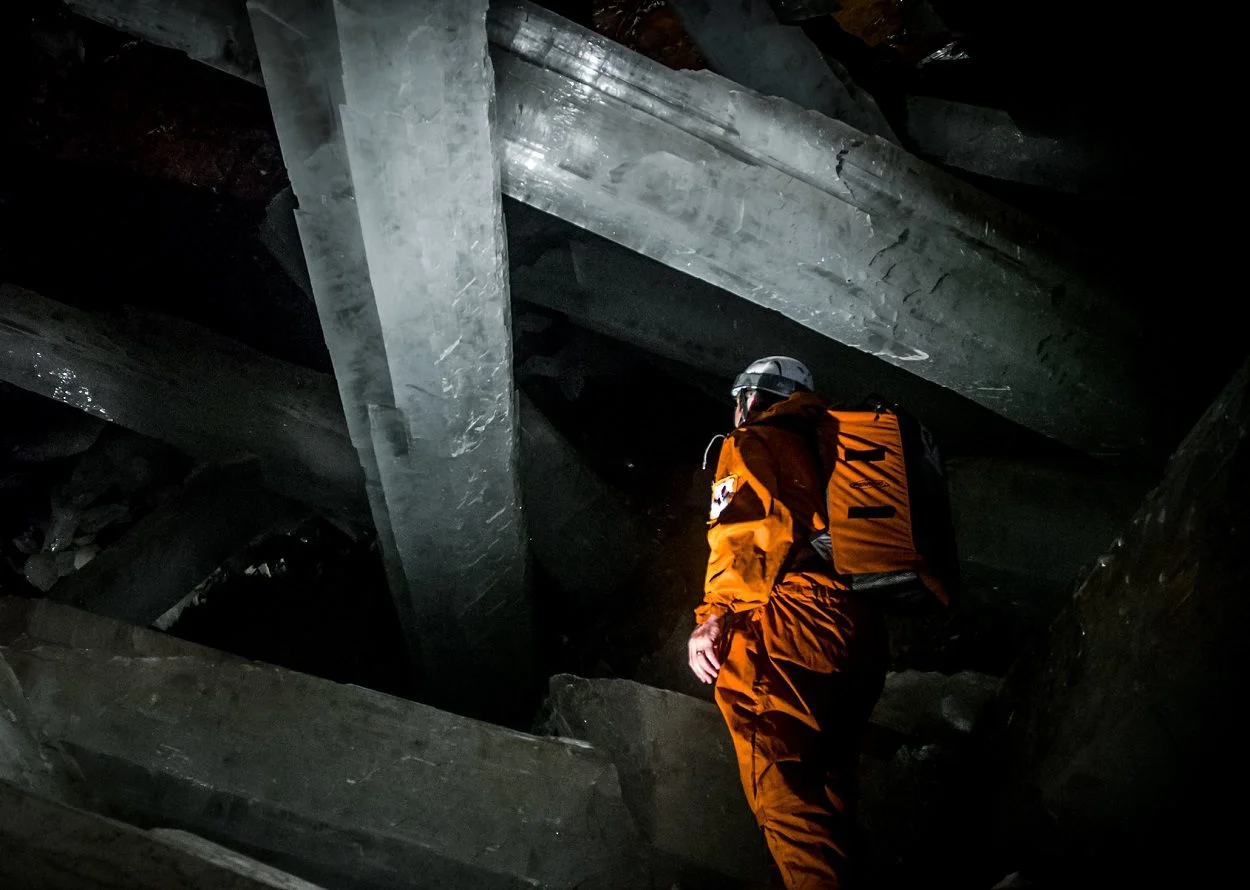The Cave of Crystals is a large chamber containing giant crystals in the Naica Mine, located in Mexico’s State of Chihuahua.
The chamber was discovered in April 2000 during mining operations to excavate a new tunnel in search of deposits of silver, zinc and lead.
Since the early 20th century, the excavation of new galleries and tunnels has led to the discovery of natural cavities containing selenite crystals, a colourless crystalline variety of gypsum. The cavities occur near fractures in the limestone rock on a fault that sits above an underground magma chamber.
Around 26 million years ago, volcanic activity formed the Naica Mountain when a mound of magma strained upward. This forced anhydrit into the cavities which remains stable at temperatures above 58 degrees Celsius.
As the magma cooled, the decrease in temperature created the conditions for anhydrite to dissolve, enriching water with minerals such as sulphate and calcium, forming selenite gypsum crystals (CaSO4 · 2 H2O).
The Cave of Crystals is a horseshoe-shaped cavity measuring 109-metres long with a volume of 5,000 to 6,000 cubic metres. Inside the cavity are giant selenite crystals, the largest of which measures 11.4 metres and weighs around 12 tonnes, while the floor of the cavity is covered with perfectly faceted crystalline blocks.

Uranium-thorium dating has placed the maximum age of the giant crystals to around 500,000 years, although, a measurement of the growth rate at (1.4±0.2)×10−5 nm/s suggests that they could have taken up to 1 million years to reach their present size.
Temperatures in the cavity can reach 58 °C with 90 to 99 percent humidity, making conditions extremely hazardous for humans. In 2017, it was discovered that the crystals contained long-dormant bacteria and archaea. Although the microbes were encased between 10,000 to 50,000 years ago, a team from the Nasa’s Astrobiology Institute in Moffett Field were able to re-animate the organisms in a lab.
Following the closure of mining activities at the level of the Cave of Crystals, the cavity has filled with water preventing any further exploration.
Header Image Credit : Paul Williams – CC BY-NC-SA 2.0





